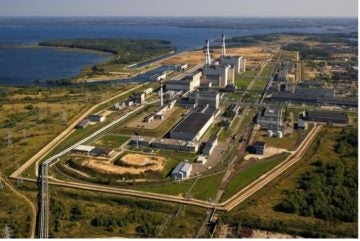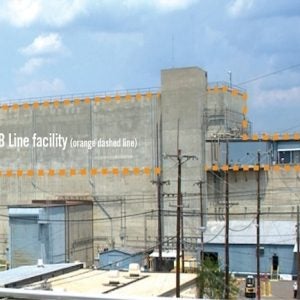
At the Ignalina NPP (INPP), the project Improving the Safety of Radioactive Waste Management at INPP, largely funded by the Norwegian Financial Mechanism, has been completed. The project, which started at the end of 2020, sought to improve management systems, controls and preventive measures during decommissioning, which would minimise the negative impact on the environment, ecosystem and population.
Ignalina NPP is currently decommissioning two 1500MWe RBMK reactors that provided 70% of Lithuania’s electricity before they were closed as a condition for Lithuania’s accession to the European Union. Ignalina NPP has removed fuel from the reactors and placed it into dry casks for interim storage at the site pending construction of a geological disposal facility (GDF).
Through the project with Norway, a number of important tasks were resolved, including the development of concepts for a bituminous waste storage facility and a GDF, as well as advanced training of personnel.
The project involved the State Atomic Energy Safety Inspectorate of Lithuania (VATESI), the Norwegian Radiation & Nuclear Safety Authority (DSA), the Central Project Management Agency (CPVA), the International Atomic Energy Agency (IAEA) and other organisations. The total value of the implemented activities amounted to more than €3m ($3.2m), 85% of which came from the Norwegian Financial Mechanism.
“One of the strategic goals of the enterprise is the safe management of radioactive waste, ensuring that future generations do not inherit the unjustified burden of radioactive waste management,” said INPP project manager Andrius Višniauskas. “This project made it possible to solve problems related to radioactive waste management, which are not unique to Lithuania. At the same time, it was an exceptional opportunity to improve knowledge and competence in the field of decommissioning of nuclear power facilities.”
One of the tasks that the project solved was the transformation of a storage facility for bituminised radioactive waste. This storage facility was put into operation at the Ignalina NPP in 1987. The 5,600-square-metre building stores 14,400 cubic metres of bitumen compound, or bitumen radioactive vapourised salts. As part of the project, the possibility of modernising the complex for storing bituminous waste into a repository was analysed.
The project also included the preparation of a methodology for removing radiation monitoring of an industrial waste landfill and a research programme for the landfill, as well as geotechnical and radiological studies. The industrial waste landfill from 1985 to 2015 contained mixed construction and demolition waste, various packaging materials, unused equipment parts, and biodegradable waste. Over 30 years, more than 30,000 cubic metres of waste have accumulated.
The results of the research will make it possible to convert the landfill into a regular waste dump. A particularly important part of the project was the development of the concept of a GDF for radioactive waste. In Lithuania, it will be an engineering structure located at a depth of several hundred metres underground and designed for the safe storage of long-lived radioactive waste generated during the work of the IAEA (1983-2009) and during decommissioning (until 2038).
The GDF is planned to be built and commissioned in 2068. Site approval is expected by 2047. Until that time, the concept will be adjusted depending on the progress of the project.






